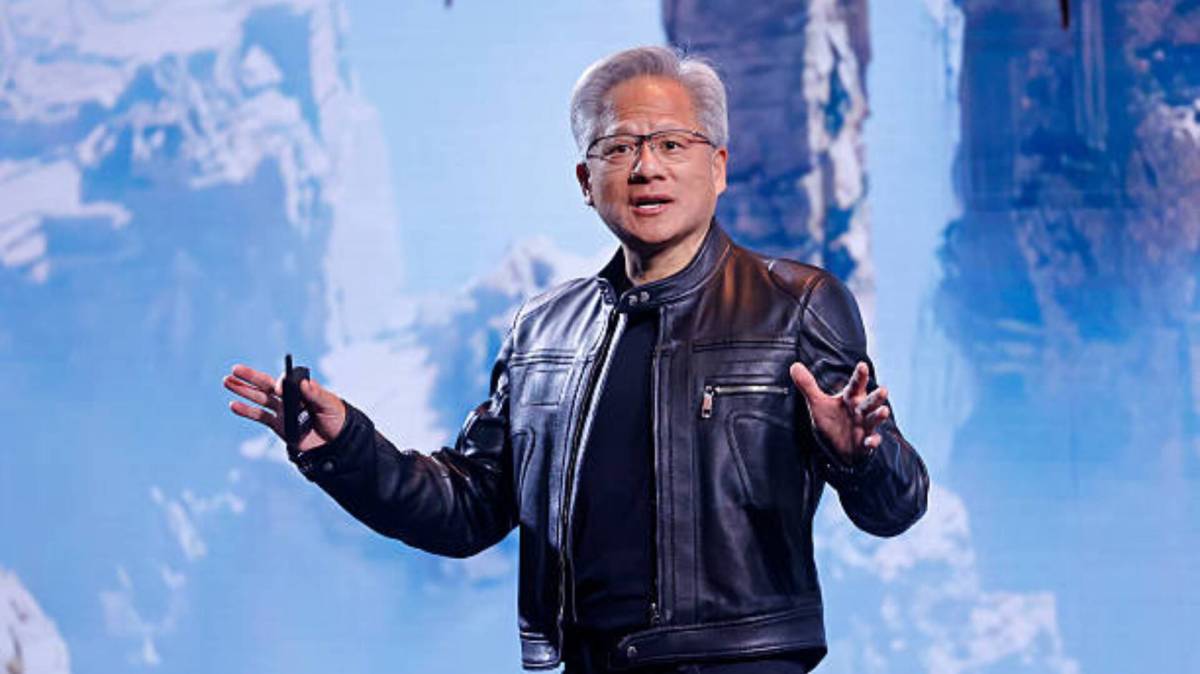Nvidia’s (NVDA) ascent shows no signs of slowing down.
The AI-powered chipmaker briefly crossed a $4.5 trillion market cap recently, solidifying itself as the heaviest weight in the S&P 500 at roughly 8% and the crown jewel of the Magnificent 7 (which makes up more than a third of the index).
Year-to-date, Nvidia stock is up nearly 40%, with an additional 20% gain in the past three months.
Clearly, its dominance in the AI space is unmatched.
The company’s proposed $100 billion partnership with OpenAI is a testament to that notion, which further expands its grip on the most important growth theme of the decade. However, with such staggering numbers, even loyal bulls concede Nvidia may be peaking.
Into this fiery debate steps James Anderson, regarded as one of the world’s most influential growth fund managers.
The former Baillie Gifford heavyweight, now at Italy’s Lingotto, has built a reputation by backing transformational winners like Tesla, Amazon, and Tencent before they became consensus trades.
Now, Anderson just delivered a sharp and surprising take on Nvidia’s latest move, one that could potentially make both the bulls and skeptics rethink their playbook.

Image source: Chesnot/Getty Images
Fund manager James Anderson says Nvidia’s OpenAI deal stirs dot-com-esque bubble fears
Legendary fund manager and investor James Anderson says that Nvidia’s proposed $100 billion investment in OpenAI reminded him of risky practices from the dot-com bubble.
Under the terms of the deal, OpenAI pays for Nvidia’s powerful GPUs in cash, while Nvidia will reinvest that amount in OpenAI through non-controlling shares.
More Nvidia:
- Analysts revamp Nvidia stock outlook on its investment in Intel
- Nvidia suffers a major blow from China
- Nvidia spending billions to spread its AI dominance
Some market watchers linked that arrangement to “vendor financing,” a 1990s tactic in which companies lent money to clients to facilitate the purchase of their products.
I have to say the words ‘vendor financing’ do not carry nice reflections to somebody of my age, Anderson told the Financial Times. It’s not quite like what many of the telecom suppliers were up to in 1999-2000 but it has certain rhymes to it. I don’t think it makes me feel entirely comfortable from that point of view.
Related: Morgan Stanley warns AI could sink 42-year-old software giant
Anderson also cautioned investors about surging AI valuations. OpenAI, for instance, is reportedly pursuing a share sale at a $500 billion valuation, up substantially from $300 billion in April. Rival Anthropic nearly tripled its valuation to $170 billion last month. Nvidia itself briefly touched a $4.5 trillion market cap this week.
“One needs to be honest that those sudden increases … were disconcerting,” Anderson said. Still, he added, Nvidia’s potential scale may lead to a market cap of double-digit trillions, which isn’t exactly a prediction, but could be a possibility.
Top voices diverge on AI bubble risk
The bulls insist this isn’t 1999.
Wedbush’s Dan Ives recently waved off “AI bubble” hand-wringing, calling the buildout a long runway, remarking that “the next two to three years will be a tech bull market,” and perhaps only in the “second inning.”
Goldman Sachs echoes a similar sentiment, pointing to surging AI infrastructure demand, with data-center power needs potentially jumping 165% by 2030.
Also, Goldman Sachs and Morgan Stanley have likewise argued that the talk of an AI “digestion phase” is “laughable” on the back of persistent demand for inference chips. Outside Wall Street, Mark Cuban flatly dismisses dot-com comparisons, hailing AI as “the great democratizer.”
Related: Bank of America revamps S&P 500 target for the rest of 2025
Bears counter that froth is real.
Bank of America’s Michael Hartnett feels that the Magnificent 7 is the best bubble proxy today, warning “it better be different this time,” even as he concedes that the move still has “more to go.”
Another heavyweight bear in GMO co-founder Jeremy Grantham feels that AI is “a bubble waiting to pop,” suggesting the current surge is inside a broader U.S. “superbubble” that’s at risk of a major reversion.
Moreover, Marko Kolanovic (ex-JPMorgan chief strategist) recently summed it up as “sounds about right for a bubble,” pointing to limited real-world returns from a myriad of AI projects at this time. Also, Deutsche Bank researchers noted that “AI bubble” worries spiked in late August, and if the bubble pops, the macro hit would be broad.
Quick takeaways:
- Bulls dismiss 1999 parallels: Wedbush’s Dan Ives feels that AI is in the “second inning” of a multi-year tech bull market.
- Infrastructure tailwinds: Goldman Sachs sees data-center power demand rising 165% by 2030, backed by durable spending.
- Skeptics warn of froth: BofA’s Hartnett and GMO’s Jeremy Grantham flag AI as a “bubble waiting to pop.”
- Mixed strategist calls: Kolanovic says returns look mostly thin, while Deutsche Bank notes “AI bubble” chatter spiked in late August.
- Net sentiment is split: Some echo James Anderson’s caution, while others argue that real revenues and bottlenecks will anchor a sustained cycle.
Related: Palantir lands surprise AI deal with 109-year-old titan
#Legendary #fund #manager #drops #bombshell #call #Nvidia #stock